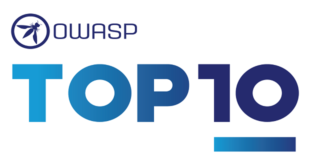Introduction
When I meet company owners for the first time and tell them that I run a B2B strategy and marketing business, I often hear statements like the one above. Many B2B leaders have had bad experiences with marketing and many others have no experience at all. As a result, they’re skeptical about marketing and feel it isn’t relevant to their business, or that it’s too complicated to bother with.
And that’s a terrible thing. The most successful B2B companies in the world use marketing to dominate their industries and deliver enviable profits. Warren Buffett considers marketing experience pivotal in his decision to purchase a company
whether it’s an insurance company (GEICO) or a railway (BNSF). Buffett says marketing strategy (he focuses on competitive advantage, a critical component of marketing 2 Lisa Shepherd strategy) is key to his investment decisions, The key to investing is not assessing how much an industry is going to affect society, or how much it will grow, but rather determining the competitive advantage of any given company and, above all, the durability of that advantage.”
In short, B2B companies need to get smart about marketing. They have the opportunity—and increasingly, the necessity—to put marketing to work for their business success. When B2B companies use marketing effectively they raise awareness of their products and services, enhance the profile of their brands, attract potential customers, and increase their profits.
More and more B2B companies are getting smart about marketing—are you? Unfortunately for many B2B companies, successful versus unsuccessful marketing is a mystery. The mystery between the two lies in the approach. Successful B2B marketers understand the importance of having a strategy, choosing and implementing the right tactics, and evolving their marketing programs as their businesses grow. Unsuccessful marketers doubt the value of a plan, dabble in marketing with a flavor-of-the-month approach, and don’t tackle the challenge of measuring their results.
In my two decades of working with organizations that range from privately held B2B companies to Fortune 500 firms to not-for-profit associations, I’ve seen a wide variety of B2B marketing. Some of it great, much of it bad. Through that experience, I’ve identified the most common reasons that marketing fails in B2B companies. Are you committing any of these seven marketing sins that lead to wasted investments and unnecessary frustration?
Lacking a marketing strategy and plan. In the excitement of launching a new product or service, it can be hard for companies to find the time to develop a plan. They have Market Smart: How to Gain Customers and Increase Profits with B2B Marketing 3 a bias towards action—and probably deadlines to meet. Defining the target market, articulating the messaging that will attract customers, and defining the tactics that will get the company’s message heard are essential efforts that are often lost in the shuffle—eventually leading to disappointing financial results.
Ignoring buyer behavior. Companies often think about products and services from their own perspective rather than from the perspective of the buyer. A product that has better technical specifications than the competitors’ isn’t a guaranteed success. To be truly successful, B2B marketers need to know everything about the buying process—what’s important to buyers, how they buy, and who’s involved in the purchasing decision. Without this knowledge, it’s impossible to develop the right messages and choose the right tactics for successful marketing.
Prioritizing sales and rejecting marketing. Many B2B companies succeed in their early years by focusing on sales. At the start, it’s vital to develop a track record. Direct relationships with pilot customers are the best way to develop this record. While sales is the most vital function in the early years of a B2B company, investing in sales doesn’t accelerate growth the way investing in marketing does—and B2B leaders have to assess when to make the shift from adding salespeople to adding marketing resources
Failing to integrate tactics. There is no silver bullet in marketing. One marketing tactic, used alone, is rarely as effective as when multiple tactics are used together. As the saying goes, the whole is greater than the sum of the parts. While coordinating marketing activities across tactics and channels requires effort, it brings much stronger results
To find more information about importance of branding, you should try Zonbase- A Leading AMZ Software for Amazon sales
Inconsistency. Often a B2B company will launch a big marketing initiative—a website launch or a trade show 4 Lisa Shepherd appearance—and then stop any marketing efforts within a few months. They’ll get bored, run out of resources to manage the effort, or feel it’s not worth the work because they haven’t seen immediate results. Or they’ll make individualized, one-off marketing efforts sporadically over the year. This hot and cold approach is a terrible waste of money
Expecting instant results. Today, business moves faster than ever—we get the status of our orders in seconds, receive month-end accounting statements in hours, and ship products in days. We want marketing to move just as fast, but relationships cannot develop in an instant and trust must be gained over time. Slow, steady progress is the key to marketing success.
 Jobsearchdone.com Top News Share Website
Jobsearchdone.com Top News Share Website




